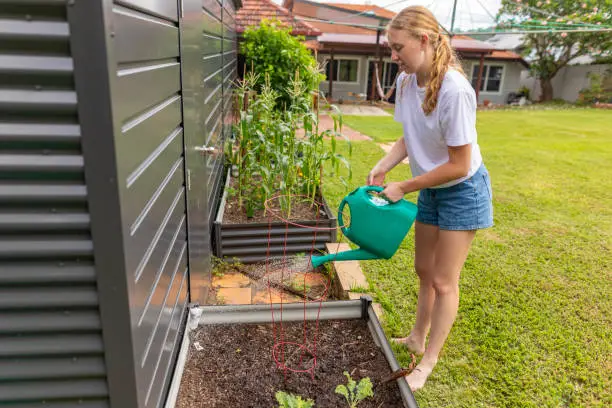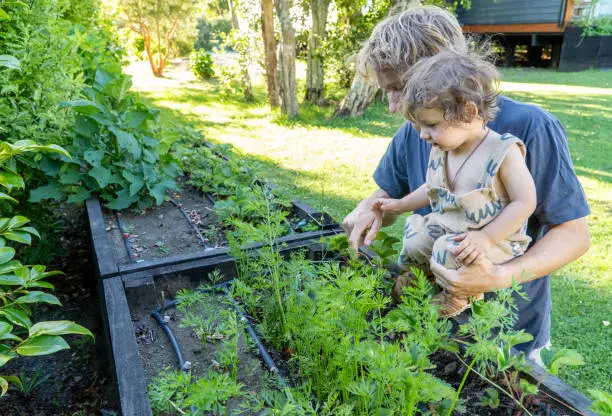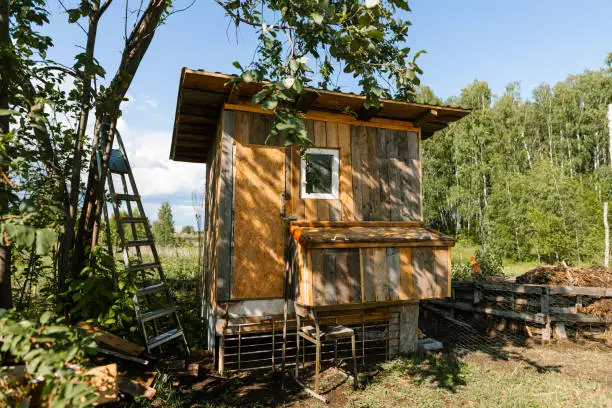Picture this: When you enter your backyard homesteading, you hear water gurgling and see bright plants and fish. This is your small-scale aquaponics system, not a fairy tale. Intrigued? Dive in.
First, what is aquaponics? Fish and plants grow together symbiotically. Fish waste nourishes plants, which filter fish water. Imagine nature recycling in your backyard.
Starting: The Essentials
Start with a fish tank, grow beds, a pump, and pipes to link everything. Imagine building an eco-friendly Lego set.
Fish tanks can be converted into bathtubs or expensive store-bought installations. Maintain cleanliness and space for your finned companions. Growing beds can be simple pots with gravel or clay pellets. These support plant roots and facilitate water passage.
Choosing Fishy Friends
Now comes the fun part—fish selection! Hardy and fast-growing tilapia are famous. Goldfish are another low-maintenance alternative. Make sure your choice will thrive in your climate.
A friend raised Koi and ended up with a pond full of drama queens who wouldn’t eat their food unless it was sprinkled. Lesson: research matters!
Friendly Plants
Starting plants with lettuce and basil is a good idea. They grow fast and require little care. Although tomatoes and peppers need more care, they can thrive.

Farm-to-table! Imagine picking basil leaves from your garden while cooking dinner!
Setting Up Shop
After gathering your gear, construct your system:
1. Place your tank in moderate shade but not complete darkness.
2. Install grow beds above or beside the tank.
3. Connect Pump & Piping: Ensure tank-to-bed water flow.
4. Fill grow beds with gravel or clay pellets.
5. Introduce Fish and Plants: Start a little and let them adjust before adding more.
Don’t be like my friend who skipped instructions and water sprayed everywhere like Old Faithful on steroids!
Maintaining Balance
Keep everything in balance with regular checks:
Quality of Water: The goal pH is neutral (about 7). Test weekly.
Fish Feeding: Overfeeding causes terrible waste.
– Plant Health: Yellowing leaves or stunted development may indicate nutritional deficiencies.
Remember my koi-loving pal? Neglecting pH levels might lead to unhappy fish.
Troubleshooting Tips
Even experienced gardeners have problems:
Reduce light exposure if algae invade, such as Thanksgiving dinner guests.
Slow plant growth? Check nutrients and supplements as needed.
Are fish acting strangely? Check ammonia promptly!
Imagine caring for an aquaponics system like caring for pets and plants—double duty, double rewards!

Time to harvest
Harvest time follows weeks or months of maintaining this small environment! Cut herbs before cooking for optimal taste, or pluck ripe tomatoes to add to salads without leaving home!
One neighbor became known on the block by donating extra produce around holidays. Smart move?
So there—a crash course on building small-scale aquaponic systems for backyard homesteading! With minimal upfront effort and continuous care, abundant harvests can be reaped while favorably impacting the environment. It’s a win-win!
Swimming with the Best: Homesteading Fish for Backyard Aquaponics
You’ve chosen to try backyard aquaponics. Great decision! Like eating your cake and having it too—fresh veggies and fish at your fingertips. Before you imagine a self-sustaining Eden, let’s talk fish. Selecting the proper species is critical. You want something durable, versatile, and climate-friendly.
The Underdog Hero: Tilapia
Tilapia may be the backyard aquaponics poster child. These guys are tough and can tolerate many water situations. Plus, they develop fast. Consider them the golden retrievers of the fish world—friendly, easygoing, and kid-friendly. Heaters may be needed if you reside in a chilly climate because they like warm water.
Catfish: The Earthy Choice
Catfish are also great. You can feed these bottom-dwellers nearly anything. For beginners still learning the feeding game, they are ideal. Their illness resistance reduces your headaches.
Trout—The Cool Customer
In cooler climates, trout may be your go-to fish. They like cold water and can handle lower oxygen levels than other species. They need additional water quality care. Consider them that high-maintenance friend who brings you delight and is worth it.
Koi: The Luxury Option
Koi are robust and adaptable, not just attractive faces. Despite being attractive fish, they are essential in aquaponics. They create lots of excrement, which helps plants develop and can survive for years if cared for.
Goldfish: Starter Pack
Goldfish are aquaponics’ training wheels. They’re cheap, plentiful, and challenging, making them a good choice for beginners or setup testers. However, they can get enormous.
Barramundi: Exotic Choice
Are you feeling daring? Barramundi may suit you. These Australian indigenous are tasty and fast-growing. Due to their high protein diet, they need warmer water and good filtration.
Perch: Middle Ground
Perch strikes a good mix between development and care. They tolerate many conditions but prefer calmer waters than tilapia and catfish. Perch may be the right choice for something easy but lucrative.
Carp—That Old Reliable
For ages, societies have farmed carp—they’re fish farming’s old warriors! They’re stronger than most species and can tolerate poor environments.
After covering some standard options, let’s dig into the details to assist you in deciding:
Temperature of Water
Fish thrive at certain temperatures:
Tilapia (70-85°F)warm water
Cool water (50-65°F): Trout
Flexible: Catfish (60-80°F), Koi (59-77°F), Goldfish (68-74°F).
#### Diet
Feeding patterns vary:
– Omnivores: Plants and animal proteins are eaten by tilapia.
Carnivores: Trout-like high-protein diets.
Be ready for these nutritional needs!
Rate of Growth
Fast-growing fish like tilapia and barramundi yield faster but require more management.
Space Needed
Some fish need more excellent space:
Compact Systems: Goldfish/small koi.
Larger Tanks: Catfish and carp grow large and need additional space.
There you have it—a fast guide to choosing the finest fish species for backyard aquaponics! Remember that each type has its peculiarities but offers unique benefits that can make homesteading rewarding.
Backyard aquaponics can be easy to build and maintain. With proper setup and care, you may develop a thriving ecosystem. First, get a fish tank, grow beds, pump, and pipes. An eco-friendly Lego set would fit in your yard. Choose tilapia, goldfish, or Koi, each with its own personality and needs. Tilapia are pleasant, fast-growing golden retrievers, while Koi bring luxury.
Start plants with lettuce and basil, which are easy to grow. Install grow beds, place the tank in mild shade, and ensure proper water flow. Fish and plants should be introduced slowly to acclimate.
Monitor water quality, feeding, and plant health to maintain equilibrium. Address algae and nutritional deficits. Harvest season brings fresh herbs and veggies from your backyard to enhance your meals and wow your neighbors.
Your climate and fish needs should guide your fish selection. Goldfish are great for novices, tilapia are great in warm water, and trout are great in cool water. Each species has unique benefits, making backyard aquaponics viable and rewarding.





Leave a Reply
You must be logged in to post a comment.